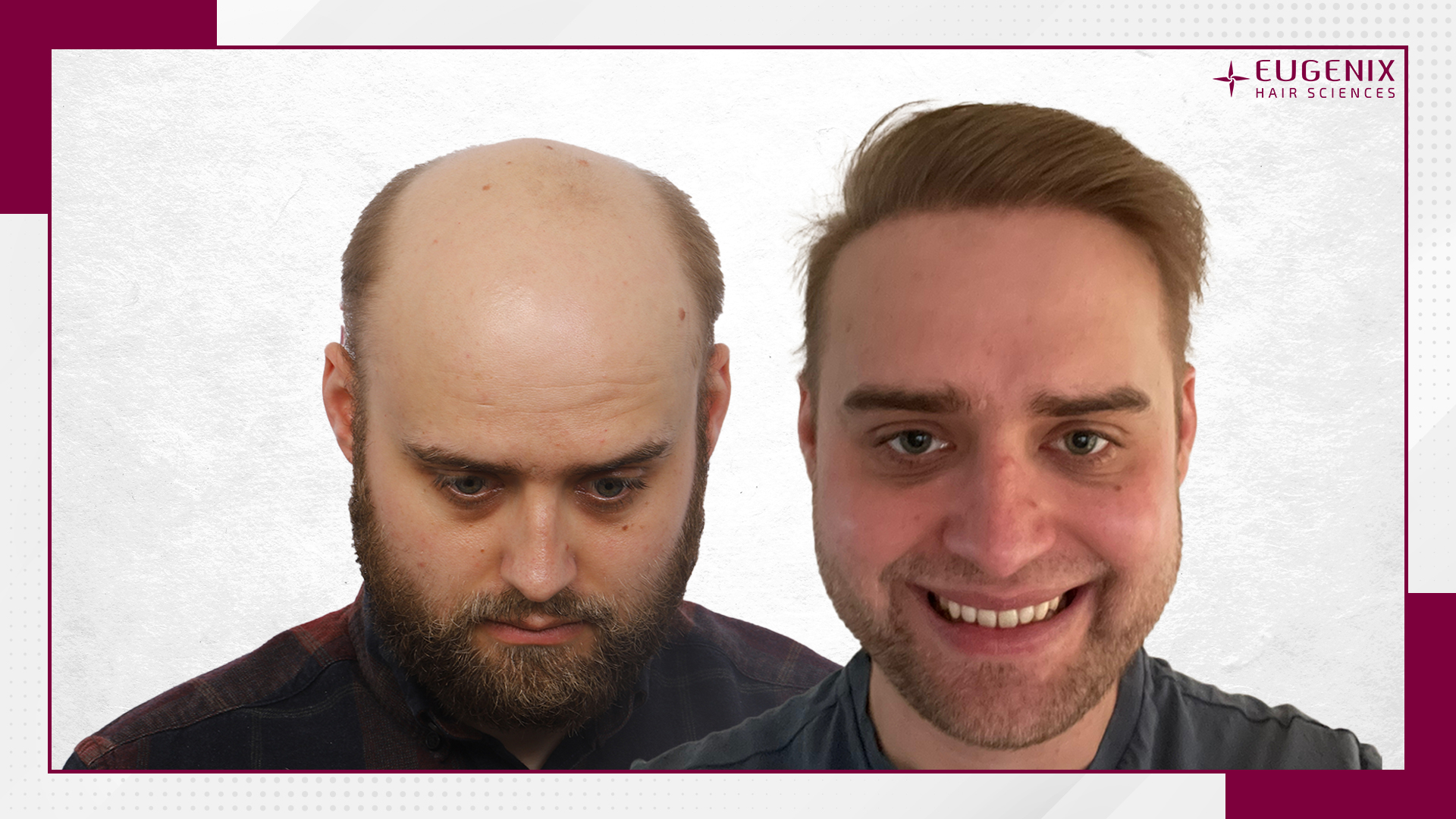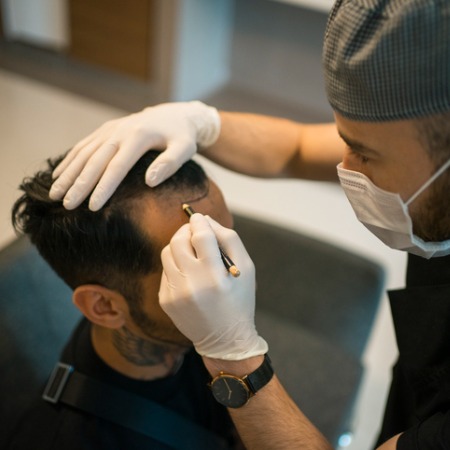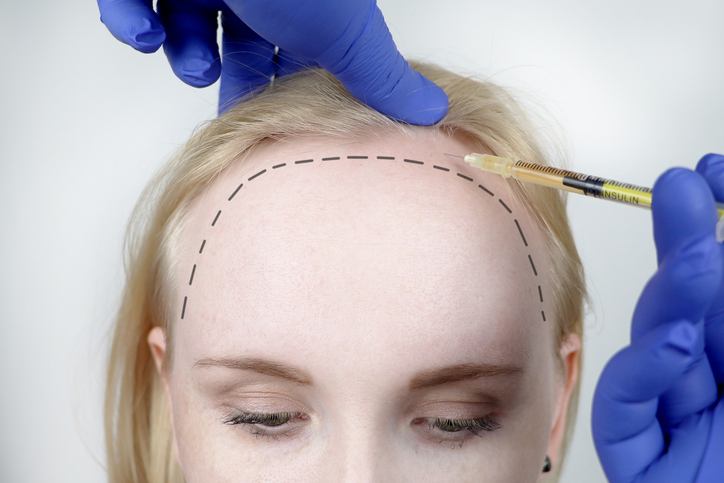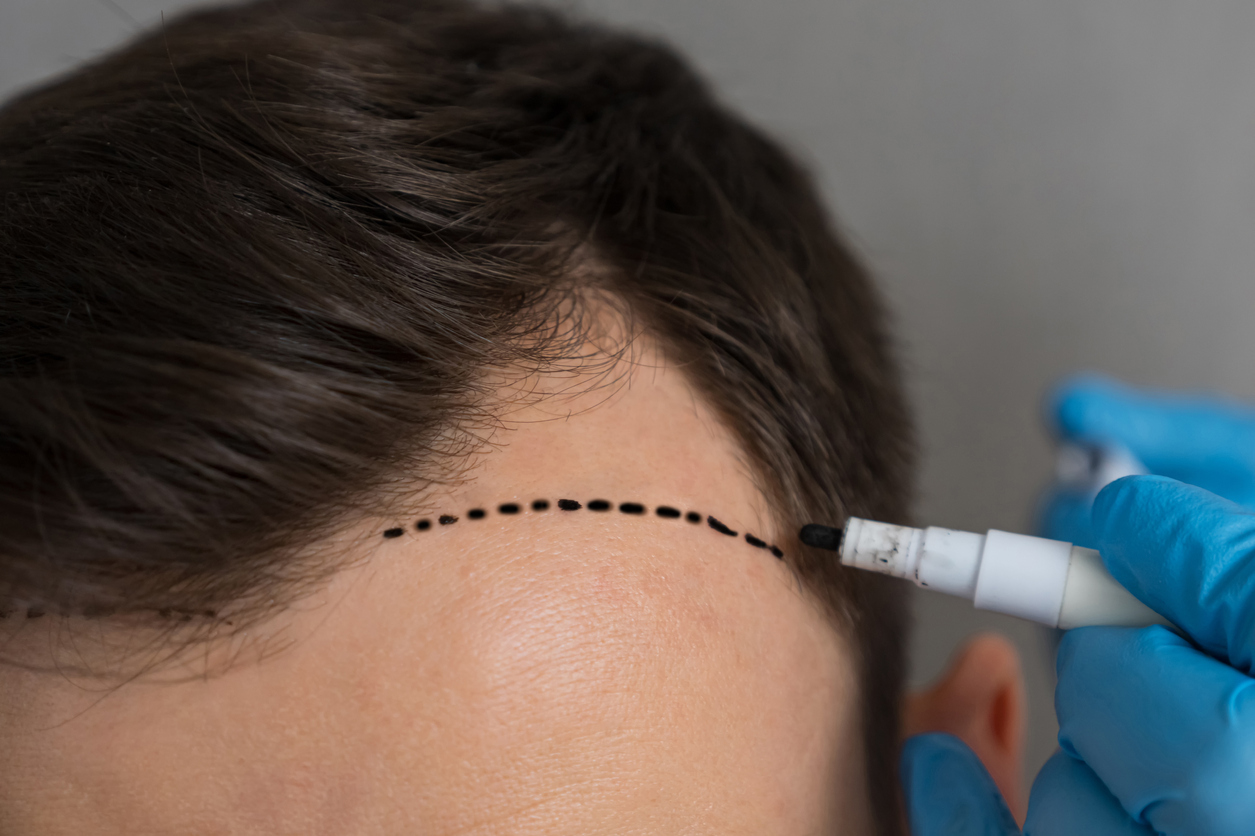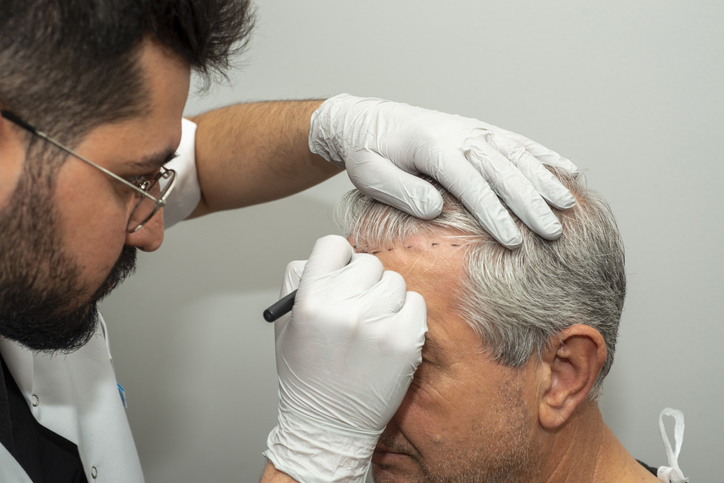What is a Receding Hairline Reconstruction?
The term ‘hairline’ refers to the row of hair follicles at the top of one’s head, visible from the front and stretching from one ear to the other.
This area is often the first victim of pattern baldness, experiencing substantial hair loss, while the crown generally suffers hair thinning. Typically, as a man surpasses the age of 30, his hairline begins to adopt an “M-shaped” appearance, indicating the onset of a “receding hairline”, a consequence of the hair follicles on both temples drawing back.
Receding hairlines do not discriminate based on gender or age, making hairline transplant operations increasingly prevalent. It stands as one of the most prevalent hair restoration methods worldwide, granting thousands of patients secure and enduring results each year.
In essence, a hair transplant relocates hair follicles from a dense region to a sparser one. The denser region, known as the “donor area”, is typically the back and sides of the head. The sparser region, often the crown, middle, or hairline, is termed the “recipient site”.
For a hairline transplant, the hairline becomes the recipient site. Hair from the donor area is grafted onto the temples and, at times, the forehead to reshape the M-shaped hairline.
Undergoing a hairline transplant not only replenishes the front and temple regions but also revamps one’s look, imparting a youthful vibe and renewed confidence. Our expert surgeons utilise modern techniques to create a hairline that naturally aligns with your age and facial structure.
Receding hairlines can manifest at any age and induce baldness and premature ageing. But fret no more. Our effective hairline restoration services ensure thinning hairlines become a thing of the past. We employ cutting-edge Follicular Unit Extraction (FUE) and Direct Hair Transplant (DHT) techniques, which are swift, virtually painless, and consistently produce remarkably natural results. Choose us for superior and effective hairline transplant procedures at your convenience.


